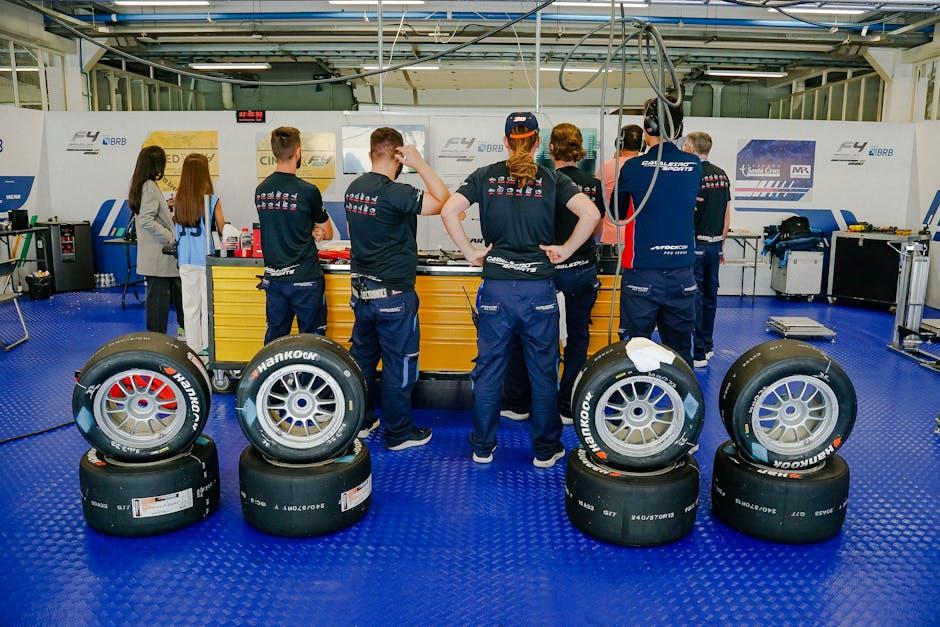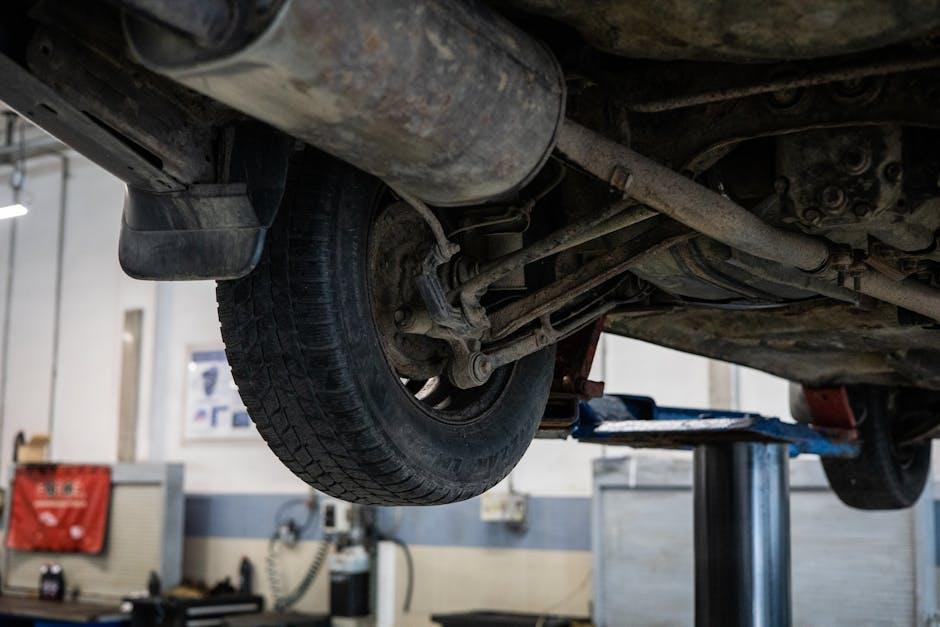Imagine your car as a finely tuned dancer, gliding smoothly across the road with every step perfectly in sync. Just as a misstep can disrupt a dancer’s rhythm, misalignment in your vehicle’s wheels can throw off its harmony, silently draining fuel efficiency and increasing wear and tear. In the world of automotive performance, alignment is often an unsung hero—one that plays a crucial role in how much fuel your car consumes on every journey. This article explores the subtle yet significant impact of wheel alignment on fuel economy, unveiling why keeping your wheels properly aligned can save more than just your tires.
Table of Contents
- The Science Behind Wheel Alignment and Fuel Efficiency
- Understanding the Hidden Costs of Misaligned Wheels
- How Proper Alignment Reduces Tire Wear and Enhances Mileage
- The Role of Alignment in Optimizing Engine Performance
- Step-by-Step Guide to Checking and Maintaining Vehicle Alignment
- Expert Tips for Choosing Alignment Services to Maximize Fuel Savings
- Q&A
- The Way Forward

The Science Behind Wheel Alignment and Fuel Efficiency
When your vehicle’s wheels are not properly aligned, the resistance between the tires and the road increases, causing the engine to work harder to maintain speed. This unnecessary effort leads to higher fuel consumption. Misalignment causes unequal tire wear and places extra strain on suspension components, which in turn affects steering efficiency and traction. Maintaining precise alignment minimizes friction, ensuring that your car moves smoothly and burns fuel more efficiently.
Several factors contribute to how wheel alignment impacts fuel economy, including:
- Toe angle: Incorrect toe settings, where tires point inward or outward, create drag.
- Camber angle: Tilted wheels reduce tire contact with the road, increasing energy loss.
- Caster angle: Improper caster affects steering stability and rolling resistance.
| Alignment Issue | Fuel Efficiency Impact | Approximate MPG Loss |
|---|---|---|
| Toe Misalignment | Increased rolling resistance | 5-10% |
| Camber Misalignment | Uneven tire wear, less traction | 3-7% |
| Caster Misalignment | Poor steering, added friction | 2-5% |

Understanding the Hidden Costs of Misaligned Wheels
When your wheels are out of alignment, they force your engine to work harder to maintain speed and stability. This increased effort causes your vehicle to burn more fuel than necessary, directly affecting your wallet at the pump. Misalignment also leads to uneven tire wear, which means you’ll replace tires more often—another hidden drain on your budget. Beyond just dollars, the constant strain can accelerate wear and tear on suspension components, leading to costly repairs down the road.
Consider these critical factors contributing to increased fuel consumption caused by misaligned wheels:
- Increased rolling resistance: Wheels not pointing straight create drag, forcing your engine to consume more energy.
- Uneven tire pressure distribution: Misaligned wheels cause tires to bear load unevenly, lowering efficiency.
- Greater mechanical stress: Suspension and steering components are under extra stress, reducing overall vehicle performance.
| Misalignment Severity | Fuel Economy Impact | Tire Wear Rate |
|---|---|---|
| Minor | 2-4% decrease | 10-15% faster |
| Moderate | 5-10% decrease | 20-30% faster |
| Severe | 10%+ decrease | 40%+ faster |

How Proper Alignment Reduces Tire Wear and Enhances Mileage
Maintaining correct alignment plays a crucial role in preventing uneven tire wear, allowing your tires to last longer and maintain optimal traction. When wheels are misaligned, certain parts of the tire face excessive pressure, causing them to wear down prematurely. This not only leads to frequent tire replacements but also affects your car’s handling and safety. Proper alignment ensures that the tires roll smoothly and uniformly across the road surface, distributing wear evenly and reducing friction that drains energy and fuels your vehicle inefficiently.
Fuel economy benefits significantly from this streamlined tire-road interaction. Misaligned wheels force your engine to work harder, as it has to compensate for resistance caused by improper rolling. The less energy wasted overcoming this resistance, the more fuel your vehicle saves. To illustrate, consider the following comparison of fuel efficiency impact between aligned and misaligned tires:
| Condition | Average MPG | Estimated Fuel Savings |
|---|---|---|
| Proper Alignment | 30 MPG | Up to 10% increase |
| Misaligned Tires | 27 MPG | Baseline |
- Reduced rolling resistance means less strain on the engine.
- Even tire wear avoids frequent replacements and downtime.
- Better vehicle stability enhances overall control and driving comfort.

The Role of Alignment in Optimizing Engine Performance
Proper alignment plays a critical role in how efficiently an engine performs, directly impacting fuel economy. When components such as the camshaft, crankshaft, and timing belt are precisely aligned, the engine operates smoothly without unnecessary friction or resistance. This precision ensures that fuel combustion happens at the optimal moment, maximizing energy extraction from every drop of fuel. Misalignment, on the other hand, causes irregular engine timing and increased mechanical drag, which can lead to wasted fuel and reduced miles per gallon.
By maintaining accurate alignment, drivers can enjoy these key benefits:
- Improved combustion efficiency: Every cycle uses fuel more effectively.
- Reduced engine wear: Less strain on moving parts means fewer repairs and better longevity.
- Lower emissions: Optimized combustion produces fewer harmful byproducts.
| Alignment Aspect | Effect on Fuel Economy |
|---|---|
| Camshaft Timing | Ensures precise valve opening; better fuel burn |
| Crankshaft Position | Optimizes piston strokes; reduces energy loss |
| Ignition System | Improves spark timing; minimizes fuel waste |

Step-by-Step Guide to Checking and Maintaining Vehicle Alignment
Ensuring your vehicle’s alignment is spot-on is crucial not just for safety but also for maximizing fuel efficiency. Begin by visually inspecting your tires for uneven wear patterns, a common indicator of misalignment. Next, check the steering wheel – if it’s off-center when driving straight, that’s a red flag. For a hands-on approach, take your car to a flat surface and gently roll it forward and backward, observing whether the steering wheel returns to the neutral position smoothly. If you notice subtle pulling to one side or if the vehicle feels “off,” it’s time for a professional alignment check.
Maintaining proper alignment has a direct impact on your fuel economy. Misaligned wheels cause uneven tire wear and increase rolling resistance, forcing your engine to work harder and consume more fuel. Here’s a quick comparison of how alignment quality affects rolling resistance and fuel usage:
| Alignment Condition | Rolling Resistance | Fuel Economy Impact |
|---|---|---|
| Proper | Low | Optimal (High MPG) |
| Slightly Off | Moderate | Reduced by ~5% |
| Severely Misaligned | High | Reduced by 10% or more |
- Regularly check your tire pressure alongside alignment for best results.
- Schedule alignment inspections every 10,000 miles or after hitting potholes or curbs.
- Keep suspension components in good condition to support proper alignment.

Expert Tips for Choosing Alignment Services to Maximize Fuel Savings
When seeking alignment services to enhance your vehicle’s fuel efficiency, prioritizing precision and expertise is key. Opt for certified technicians who employ advanced alignment technology to ensure every adjustment is exact. This not only optimizes tire contact with the road but also minimizes rolling resistance, directly influencing your fuel consumption. Additionally, inquire about the inclusion of a comprehensive vehicle inspection; early detection of suspension or tire wear issues can prevent inefficient alignment settings that drain gas mileage.
Consider these essential factors when choosing alignment services to maximize fuel savings:
- Calibration Standards: Confirm the service center uses manufacturer-specific alignment data for your vehicle model.
- Equipment Quality: Modern 3D or laser alignment tools deliver superior accuracy over legacy methods.
- Post-Service Testing: Request documentation or a printout showing before-and-after alignment figures.
| Service Attribute | Fuel Impact |
|---|---|
| Wheel Camber Adjustment | Reduces tire drag up to 5% |
| Toe Angle Alignment | Improves straight-line fuel efficiency by 7% |
| Suspension Inspection | Prevents power loss due to uneven tire wear |
Q&A
Q: What is wheel alignment, and why does it matter for my vehicle?
A: Wheel alignment refers to the adjustment of a car’s suspension — the system that connects a vehicle to its wheels. Proper alignment ensures that the wheels point in the right direction relative to each other and the road. When wheels are misaligned, your car works harder to move forward, which can lead to wasted fuel.
Q: How exactly does misalignment affect fuel economy?
A: When your wheels are out of alignment, they create more rolling resistance against the road. Imagine dragging a shopping cart with one wheel turned sideways — it takes more effort, right? Similarly, your engine burns extra fuel to overcome this resistance, resulting in lower miles per gallon.
Q: Can poor alignment cause damage beyond reducing fuel efficiency?
A: Absolutely. Misalignment often leads to uneven tire wear, which means you’ll replace tires more frequently. It can also strain your suspension parts and steering system, potentially leading to costly repairs. In essence, your fuel economy suffers alongside your vehicle’s health.
Q: How often should I get my alignment checked to optimize fuel economy?
A: It’s a good practice to have your alignment checked every 6,000 to 10,000 miles, or at least once a year. Also, if you notice your car pulling to one side, uneven tire wear, or a crooked steering wheel when driving straight, it’s time for an alignment check.
Q: Is fixing wheel alignment a costly fix?
A: Compared to the extra fuel costs and premature tire replacements caused by misalignment, alignment services are relatively affordable. Investing in timely alignment not only saves money at the pump but also extends the life of your tires and suspension.
Q: Can good alignment improve overall driving experience?
A: Yes! Proper alignment ensures smoother handling, better steering response, and increased safety. It’s a subtle tweak that can transform how your car feels on the road while also being kinder to your wallet and the environment.
Q: In summary, how does alignment influence fuel economy?
A: Proper wheel alignment reduces unnecessary drag and resistance, allowing your vehicle to glide more efficiently. This efficiency means your engine uses less fuel to maintain speed, translating into better gas mileage and cost savings over time.
The Way Forward
In the delicate dance between machine and motion, alignment plays the role of an unseen choreographer, guiding each wheel with precision and purpose. Though often overlooked, this subtle adjustment ensures that every drop of fuel goes further, reducing waste and emissions alike. By paying close attention to alignment, drivers don’t just improve their vehicle’s performance—they contribute to a more efficient and sustainable journey on the road. Ultimately, maintaining proper alignment is more than a mechanical tweak; it’s a quiet commitment to smarter driving and a cleaner future.
